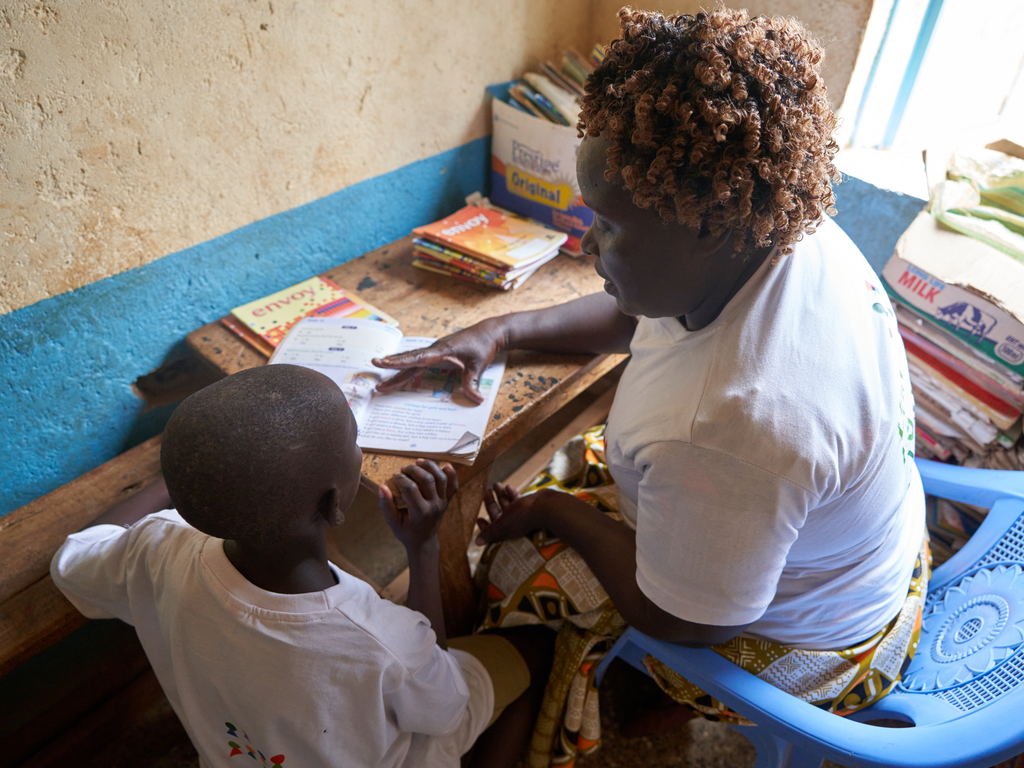
British schoolchildren welcome refugees into their communities
Refugees and internally displaced people, Teachers and learning
The Refugee Welcome Schools programme is being expanded and students are also sending aid to Syrian children.
Schoolchildren in UK cities are welcoming refugees and sending aid abroad as part of a European project to improve the lives of people fleeing war.
A pilot programme in Cardiff and Birmingham called Refugee Welcome Schools has proved hugely successful and there are plans to expand it to other British towns and cities.
It was developed in response to negative attitudes towards refugees and a huge rise in hate crimes in the UK after the Brexit vote.
Refugee Welcome Schools was developed jointly by the UK teachers’ union NASUWT and Citizens UK, with six schools involved in pilots. It is an accreditation scheme to recognise and praise schools helping refugees to integrate into the community.
Citizens UK developed the concept in 2016 with Saint Gabriel’s College, a Church of England secondary school in South London.
To become a Refugee Welcome School, schools must form a Refugee Welcome Plan, Learning Plan and Action Plan. Ideas are examined by a Refugee Welcome Schools Panel, made up of teachers, educationalists, trades unionists, children and refugees themselves.
As part of the project, children at Anglesey and St Francis Primary Schools in Birmingham have sent aid to Syrian children in a refugee camp.
The project – highlighted at the United Nations meeting last month – was piloted in Cardiff and Birmingham throughout 2016 and 2017 and is being expanded to other parts of the UK including London and Milton Keynes.
Fred Grindrod of NASUWT said: “It’s very much an organic project and we’re growing it. We had six schools accredited in the pilots but we hope to turn it into a national scheme for our members to promote over the next few years.
“We received some funding from Education International, our umbrella organisation for teacher trade unions, to look at how we could work with the community to encourage trade unionist teachers in schools to work with community organisations to promote the integration of refugees into the education system and communities.
“We partnered with Citizens UK to develop what that meant and we came up with the concept. Schools were doing a lot already but efforts were not really praised or sung about, so want to capture good practice about what’s going on.
“But we also want to challenge schools about what they’re doing to make the whole school body aware of refugees’ issues and how a school plays its role in the community.”
NASUWT is a member of Education International, the global organisation representing teachers that has been supporting teachers in Europe to help refugees.

EI told Their News: “Education International has been supporting efforts from education unions around the world to promote the rights of migrants and refugees in education over the past two years.”
You can find detailed information about the initiatives on the portal Education4refugees. Examples include a project by the Educational Institute of Scotland (EIS) – an EI affiliate and Scotland’s largest education trade union.
EIS has created guides for teachers on how to address myths of immigration in the classroom – such as “we have loads of immigrants in the UK” and “people come to the UK because we’re a soft touch and give out loads of benefits”.
The guides were presented at the Scottish Parliament and sent to all nurseries, schools, colleges and universities. They have also been published on the EIS website.
EIS President Margaret Smith said: “EIS welcomes and values a diverse and inclusive society and we welcome refugees and asylum seekers to Scotland. We reject the demonisation of refugees and asylum seekers.”
In other European countries
A raft of projects have been developed elsewhere in Europe by teachers. The Teacher Union of Serbia (TUS) attended a conference last month on the integration of migrants and refugees in education.
Being a transit country for refugees, Serbia is currently hosting 3360 asylum-seekers, including 344 children enrolled in 33 schools across the country.
TUS said: “With a view to ensuring access to quality education for asylum-seeking children, the Serbian community is mobilising to face a wide range of challenges – from language acquisition to teaching and learning in the mother tongue and in a second language, to catering for displaced students having experienced trauma or even to logistics and practicalities related to catering, transporting to and from asylum centres and school supplies for a supportive school environment.”
In Germany, GEW Union State branch has created a working group on refugees’ education. In 2015 some 12,000 refugees, including many young people under 18 without parents, arrived in the state of Bremen. From 2016 onwards, the number of newly arriving refugees has decreased but the challenges for the education system in Bremen continue.
As many refugee children have moved to mainstream education after completing preparatory German language courses, there are challenges on continuous language support.
These problems prompted the authorities to consider a different approach to newcomers’ education in which children who completed preparatory courses would attend separate – so-called “cooperation” – classes, and not integrate into ordinary classrooms as happens currently.
In response, the union’s campaigning objectives have changed towards advocating for quality integrated education for refugees and migrants.
Bulgaria and Spain are also developing ideas to support refugees in education. Earlier this year a delegation from Bulgaria visited Spain to share practices with Spanish counterparts and explore joint strategies to tackle common challenges.
More news

Take the test and discover how our Schools Hub helps students grasp the global education crisis
